|
|
|
| |
|
Celebrating Sustainable Practice |
 |
 |
 |
 |
 |
 |
 |
 |
 |
 |
 |
| Contributors to this issue (left to right): |
| Lindsay Martin, Senior Consultant, Lord Cultural Resources and Guest Editor - Celebrating Sustainable Practice |
| Tracy Lauritzen Wright, Director of Administration and Special Projects, National Civil Rights Museum - Social Sustainability at the National Civil Rights Museum |
| Tim McNeil, Chair, California Association of Museums Green Museums Initiative Committee - The Green Museums Accord |
Ted Silberberg, Senior Principal, Market and Financial Planning, Lord Cultural Resources - Some Trends to Watch |
| Mofidul Hoque, Trustee, Liberation War Museum - Oral History Project with a Difference |
| Paul Redman, Director of Longwood Gardens - Beyond the Garden Gates: Our Culture of Planning |
|
|
| |
| |
Celebrating Sustainable Practice
|
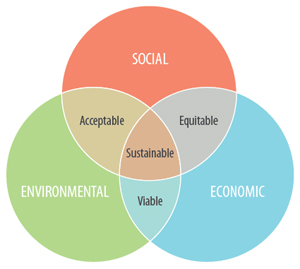
Dimensions of Sustainability
United Nations General Assembly. 2005 World Summit Outcome,
Resolution A/60/1, adopted by the General Assembly on
15 September 2005. |
|
By Lindsay Martin,
Senior Consultant,
Lord Cultural Resources
Increasingly sustainability is the primary concern of cultural organizations, new and old alike.
While shifts in the global economy and recent events have helped to put this issue at the forefront of management, government and board discussions – it has always been core to the missions of museums. Museums are the keepers of tangible and intangible heritage; preserving it in perpetuity for future generations. Thus they must be sustainable to fulfill the promise of their missions and carry out this critical societal responsibility.
As civic leaders, museums must strive for and balance social, environmental, economic, and cultural sustainability – the quadruple bottom line. Each dimension of sustainability has its own unique charge, yet is mutually reinforcing with the others.
|
|
The articles in this edition examine how museums are making meaningful contributions to each of these dimensions of sustainability. On the social dimension, the National Civil Rights Museum in Nashville, Tennessee shares with us about their commitment to making education a civil right in America. On the environmental dimension, the California Museum Association’s Green Accord, a collective action of museums to contribute to environmental sustainability, features highlights from its members. Ted Silberberg provides insights to trends in financial sustainability. For the cultural dimension, the Liberation War Museum in Bangladesh tells us about an education program that embraces the museums mission to be a national museum and engage young people in dialogue. Longwood Gardens, an organization now into six years of delivering on its its plans, shares how planning has contributed to long-term sustainability and success.
Read More...
|
|
| |
| Social Sustainability |
| |
Social Sustainability at the National Civil Rights Museum
|
|
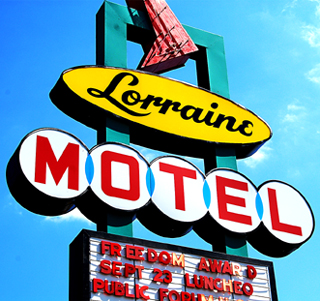
Lorraine Motel, Memphis, TN |
By Tracy Lauritzen Wright,
Director of Administration and Special Projects,
National Civil Rights Museum
In 2011, the National Civil Rights Museum (NCRM), located at the Lorraine Motel in Memphis, Tennessee where Dr. Martin Luther King, Jr. was assassinated, celebrated its twentieth anniversary. At the time this was a significant milestone, as NCRM was the first museum to interpret the African American civil rights movement in permanent exhibit format. The original museum design approached the story NCRM interprets from a perspective of commemoration, which was appropriate as the first museum of this kind in the nation.
Read More...
| |
|
| |
| Environmental Sustainability |
| |
The Green Museums Accord
|
|
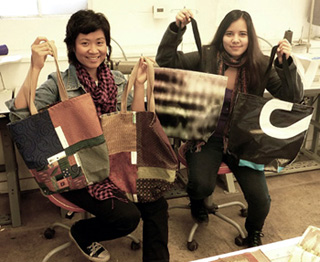
Graphics are printed on fabric and made into re-useable products by fashion design students at the UC Davis Design Museum. |
By Tim McNeil,
Chair,
California Association of Museums Green Museums Initiative Committee
Launched in 2010 by the California Association of Museums, the Green Museums Accord encourages museums to become catalysts for environmental sustainability. The goal is straightforward: every museum, regardless of mission, size or resources, can do something to support a sustainable future. Adoption is simple: it is a non-legally binding commitment to start greening a museum.
Read More...
| |
|
| |
| Economic Sustainability |
| |
Some Trends to Watch
|
|
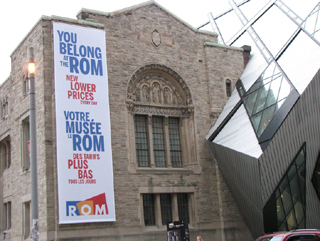
The Royal Ontario Museum (ROM) took a leadership role in October 2011 by reducing admission prices to improve affordability for all visitors in challenging economic times. |
By Ted Silberberg,
Senior Principal, Market and Financial Planning,
Lord Cultural Resources
In these tough economic times, strategies to boost earned income and control operating costs are of substantial importance to the financial sustainability of many museums. In reality, a combination of private and government sources still account for the bulk of operating revenues. Financial sustainability is thus very much about identifying not only what the market wants but also what funders want (private and governmental).
Read More...
| |
|
| |
| Cultural Sustainability |
| |
Oral History Project with a Difference
|
|
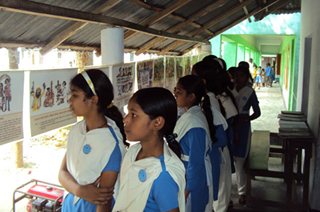
Students at the Liberation War Museum, Dhaka, Bangladesh. |
By Mofidul Hoque,
Trustee,
Liberation War Museum
The Liberation War Museum in Bangladesh was established by private initiative in 1996 to memorize the struggle of independence of 1971, but the strong support and involvement of the community made it a peoples’ museum. One of its main programs is the oral history project designed to bring students to the museum by allowing them to play an active role in retrieving the history of the Liberation War. Students are encouraged to talk to their senior family and community members who remember the events of 1971, and to write down the accounts of their experiences, and subsequently to submit those write-ups to the network teacher who volunteers to collect them on behalf of the Museum.
Read More... |
|
|
| |
| Planning in Action |
| |
Beyond the Garden Gates:
Our Culture of Planning
|
|
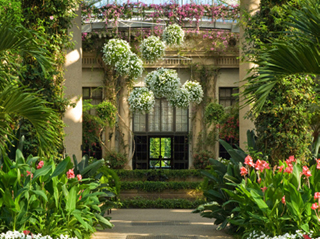
Longwood Gardens, Kennett Square, PA |
Paul B. Redman,
Director,
Longwood Gardens
The inception of Longwood Gardens as a place of beauty, education, and the arts stems from our founder Pierre S. du Pont (1879-1954), who left an indelible mark on the property he purchased more than a century ago. But how does an institution like ours effectively nurture its legacy while expanding its vision for the future?
We believe the answer lies with integrated planning, careful implementation, and true inclusion, ensuring that everyone at all levels of Longwood impacts the direction we’re headed.
Read More... | |
|
| |
|
|
| |
|
Guest Editor: Lindsay Martin | Managing Editor: Iwona Osmolska | Production: Andrea Kezdi |
| |
CURRENT ISSUE | PRINT ISSUE | ARCHIVE | CONTACT | SUBSCRIBE
|
Copyright © Lord Cultural Resources, www.lord.ca. All Rights Reserved.
Lord Cultural Resources values your privacy and does not sell or trade email addresses.
Please see our privacy policy for more information.
Share your views and email us at news@lord.ca.
|

















